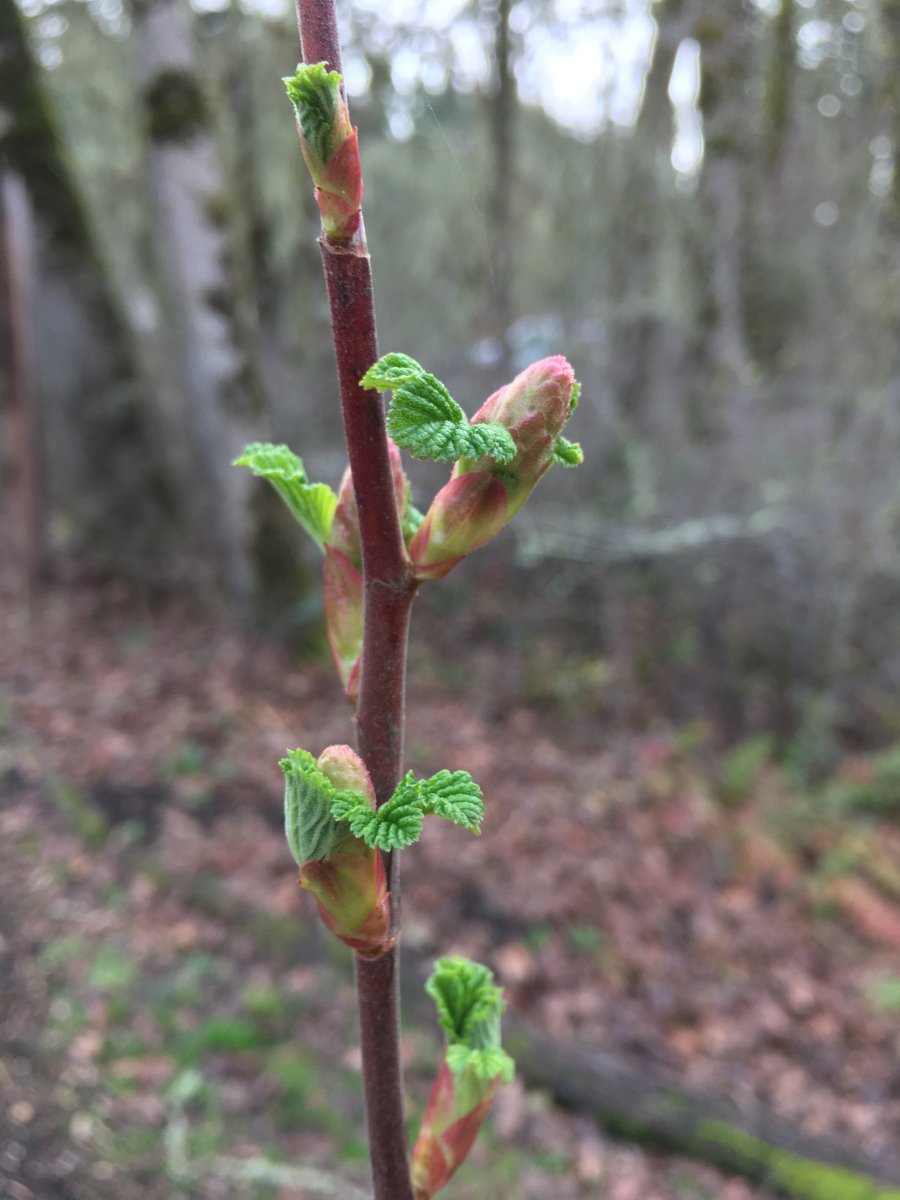Red-flowering Currant (Ribes sanguineum)
The Gooseberry Family (Grossulariaceae)
This shrub grows in low to middle elevations in dry open woods, rocky slopes or disturbed sites. The ones growing at the arboretum have multiple stems growing up from the base of the shrub.
Buds & Leaves
When the sun breaks through during the winter, its rays set aflame the buds of the red-flowering currant—torches lighting the way for spring.
The leaves are alternate, deciduous, and regularly or irregularly 5-lobed. The prominent veins on the underside of the leaf remind me of limbs of a tree extending out into its canopy. The backside of the leaf is also paler and hairier.
Flowers
The red-flowering currant has vibrant, pink flower clusters for which the plant is named. The flowers are 3/4” long and red to pink in color. There are 10 - 30 in dense pendent clusters. I see bumblebees and hummingbirds visiting these flowers often.
Fruit
When the berries form, they start as an inconspicuous green that blends in with the foliage. When they mature, they turn a dark blue that is coated with a white, waxy bloom.
It is a celestial life form with its frosty, cool surface. It has become peppered with cosmic freckles in its travels through the universe. This shrub could easily be called Blue Stardust berry or Blue Galaxy berry. I love the contrast between the radiant, pink flowers and the wintry-blue berry.
The field guide Plants of the Pacific Northwest Coast states that the fruit is “unpalatable” or “edible but insipid.” I ate one. I found the taste to be okay, but the berries were seedy.
Bark
The bark is a reddish brown.
References
Mathews, Daniel. Cascade-Olympic Natural History. Raven Editions in conjunction with Portland Audubon Society, 1988.
Pojar, Jim, and Andy MacKinnon. Plants of the Pacific Northwest Coast: Washington, Oregon, British Columbia and Alaska (Revised). B.C. Ministry of Forests and Lone Pine Publishing, 1994.
Quick Reference:
Height: 3 - 9 feet tall.
Leaves: Alternate, deciduous, regularly or irregularly 5-lobed, lower surface area paler and hairier.
Flowers: 3/4” long, red to pink, 10 - 30 in dense pendent clusters.
Fruit: Blue-black, round berries with glandular hairs and a white waxy bloom
Habitat: Dry open woods, rocky slopes or disturbed sites.
Photo Location:
Mt. Pisgah Arboretum
Eugene, OR



















